Forward Thinking Blog
A thought leadership and best practices forum across the breadth of business operations management, strategy, organizational development, and entrepreneurship. A Catalyze Value continuous improvement POV. Practical. Implementable.

Perception Is Reality?

Can A.I. Do Everything?
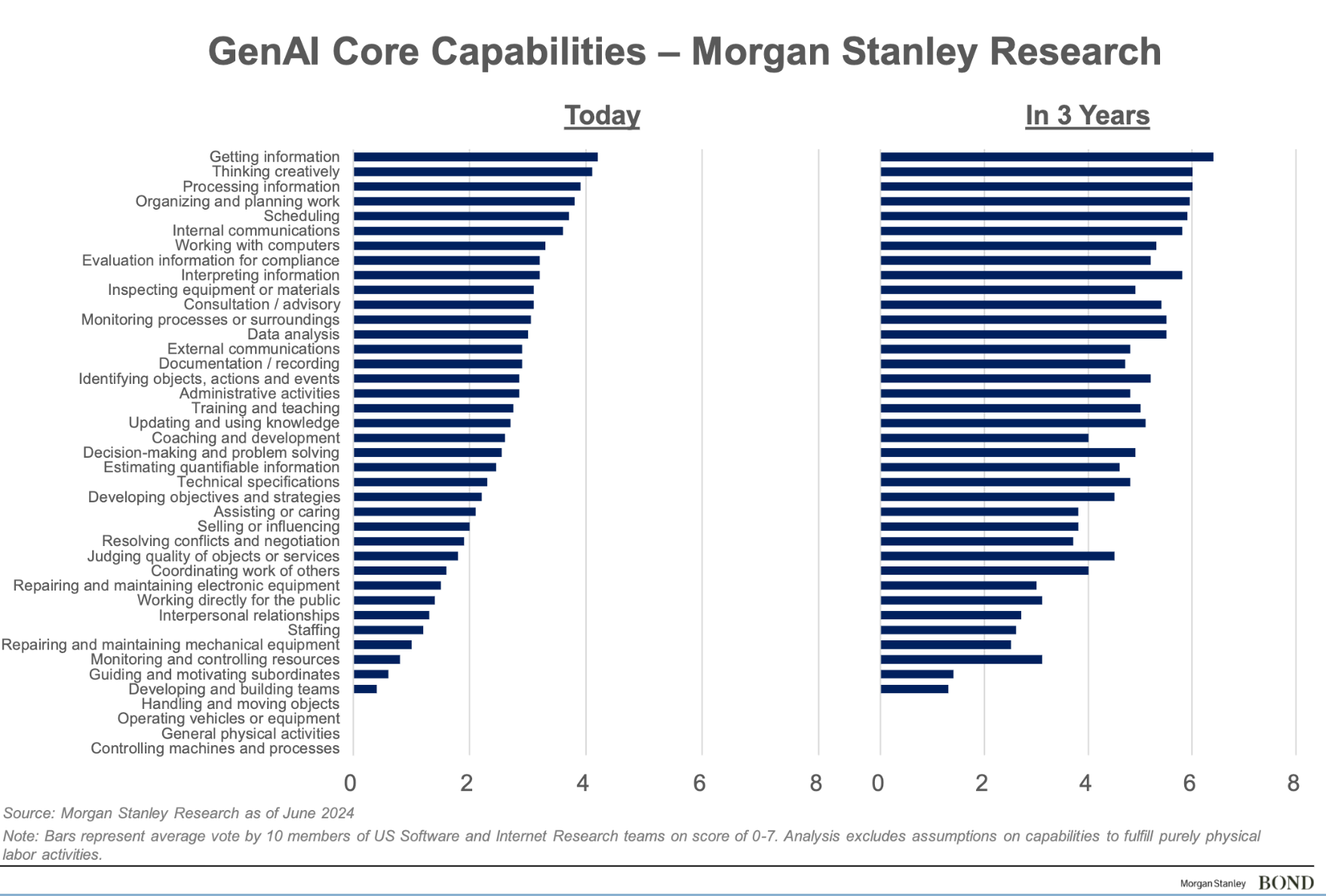

Gratitude As A Contagious Business Value Driver
It's that time of year once again where we all set aside time to wish customers, colleagues, vendors, friends and the like Merry Christmas or Best of the Season. Years ago it was an expensive investment - buying cards, stamps and hand writing messages within. Nowadays it's an email or an automated service that doesn't take nearly as long or cost nearly as much. Have you ever stopped to ask yourself why you do this? The response often enough is because it's the right thing to do, or to keep good relations.
We would like to argue another reason - demonstrating gratitude. Whether you celebrate Christmas or not, December is an opportunity like no other to reflect back, say thank you to those that helped afford your success this year, as well as perform a plus/delta for the upcoming year.
Gratitude in the form of the words thank you often do not get expressed enough: For customers you rarely engage with it's a chance to say you still appreciate them, and for the ones you deal with weekly it's an opportunity to reinforce your relationship and appreciation. Arguably the more personal you can make this the more earnestly the message will be perceived, all the better if you can do it in person. Even if you are lazy to write it a AI Chatbot can do it for you if you express your sentiments accurately to it, in many ways it is the thought that counts - the fact that you acted is what will be remembered if not the actual message.
For Example:
"Dear (Customer Name),
I was looking back at the year and wanted to say how much we appreciate working with your company. I personally really enjoyed the project (insert specific detail) we were able to work on together and am looking forward to continuing our collective success in the year ahead". Merry Christmas and best of the season to you and the team at XYZ Company."
or...
"Dear (Co Worker Name),
I just wanted to thank you your support on xyz...or...you did an amazing job on xyz....
Imagine if you received some variation of the note above, how appreciated would you feel? This in comparison to a best of the season generic wish.
By and large over the long term business continues because of the relationship not just based on the product or service offered.
Christmas is often characterized as the "season of giving". Often productivity is lost during the month of December, but looked at another way the month presents tremendous opportunity. It is easy to get caught up in material gifts and we often set a precedent with our customers each year which in some cases gets harder to fulfill (chocolate, wine bottles, fancy dinners) based on different factors including having a profitable year. Giving thanks or demonstrating gratitude is free and if curated effectively, equally a part of the festive season as a value driver for your business. This gratitude is contagious and can take your business far. Try it!

The Work-from-Home Debate: Balancing Culture, Organizational Resiliency, and Business Continuity
On one hand, remote work offers undeniable benefits. It provides flexibility, allowing employees to balance personal and professional responsibilities more effectively. This can enhance productivity by enabling individuals to work in environments tailored to their needs. Additionally, the elimination of daily commutes reduces stress and associated costs, contributing to improved work-life balance. One would also hope it drives an appreciation for the employer's ability to offer this benefit, both in general and in terms of loyalty.
For the employee who feels they are paid a salary to do a job, they likely feel fulfilled and that they are delivering on their promise. Conversely an employer or manager who only sees the same employee 2x a week and each month on a income statement may not feel the same. Depending on your readiness to adapt or the type of business such and arrangement may or not work.
This appreciation for WFH may also eventually deteriorate over time in the context of the Paradox of Abundance—whether it's an increase in salary, additional resources, or greater benefits, employees may develop higher expectations and demands from where they are today, potentially placing undue or unintended pressures on a business as it navigates macroeconomic cycles in its own lifespan.
The remote work model also presents notable challenges, particularly concerning company culture and mentorship. While remote work can foster a sense of autonomy and trust, it may detract from organizational culture. Without regular face-to-face interactions, spontaneous collaboration and relationship-building are diminished, potentially weakening team cohesion and creative synergy. The absence of in-person presence may make it harder for employees to fully grasp the organization's values and operational dynamics, potentially leading to a reliance on meetings and leaving employees questioning when they can get actual work done.
More poignantly employees working from home more than three days a week, there is a risk of losing out on organic mentorship and understanding through emulation on what it takes to succeed within the organization. Interactions provide valuable opportunities for learning through observation and informal guidance from peers and leaders. Remote work can create gaps in this experiential learning, making it more challenging for employees to align with organizational values and navigate career development with purpose - but these gaps can be filled.
Notably we don't argue that the absence of physical interaction (in person or face to face) is the issue. It is the binary jump from one mode to another without the deliberate thought to soft and hard infrastructure and programs that can make a hybrid or entirely WFH model effective or ineffective.
The thesis of this article is not to argue for one model over another but to state that some businesses can adapt to remote work while others inherently cannot. As a starting point rather than focusing solely on the pros and cons, start by examining the purpose and goals of each model and the extent and impact of embracing one or the other. Based on these set of facts, you can adapt a culture and technical infrastructure to allow your organization to thrive in that environment. Each marginal WFH day taken or given has implications and perhaps it's a worthwhile on either side to think in terms of marginal returns from the perspective of your business and your teams. There is an equilibrium, that if communicated based on purpose and contextualized rather than blanket statements can be a positive lever long term.
Shopify is an example of a company that, post-COVID, went fully remote but invested considerable time, process and of course capital in setting up the infrastructure to support a remote work environment. They have published several articles on the their journey here.
In conclusion, while this note highlights more cons than pros of WFH, this is not intended to sway your decision. WFH offers flexibility and potential cost savings, it also introduces challenges related to cultural cohesion and mentorship which can impact profitability long term. Whether large or small, your organization must ensure that its approach to remote work is fit for purpose, considering aspects of culture, talent/labour market, productivity, and your ability to drive sales, continuity, and customer satisfaction.
From Strategic Corporate Success to Personal Success

At the end of 2018 on Forward Thinking a discussion opened on creating a strategic plan for your business and lend framework for clarity. Some of the feedback received indicated that this was really what a fiscal plan is, but this is a common pitfall that can inhibit creativity. Thus in fact they are quite different. Your strategic plan does not need to immediately come together against a budget. While it is good to inherently be practical, don’t let the fiscal planning inhibit "ideation". Budgeting generally comes at the managerial level, improvement and creativity is everyone's responsibility.
This same idea of creativity extends to personal growth planning. The idea of goal setting can be daunting, especially for those who have never truly tried before. There is a sense of earnestness required with the self that is not required at other times. We are taught from an elementary age how to set goals and they must be SMART (specific, measurable, attainable, , relevant, time-bound). This is a great way method, adding accountability in the form of a colleague or friend can make the goal even more attainable. There can be a give and take, in that while some matters come into better focus, others might fall into the background.
Creating or setting goals can be daunting and perhaps even discouraging to some. Further thinking on goals or realizing where the need is can be equally challenging. Thus one alternate method to think of goal setting is in terms of a "Growth Framework" and separating the different aspects of yourself into different areas.
One easy way to create this Growth Framework is to create a table, ideally on paper as the act of writing is an valuable step, and break your life down into its individual areas. There is no limit or no invalid sub category – the purpose of this is to spark critical thinking, make the accountability practical over the course of a year, and equally make it visually manageable to revisit and comprehend later in the year.
Here is an implementable example -
| Growth Framework: | ||
Career Team Achievement Skill | Personal
| Family
|
Continual Learning
Personal: Career Oriented | Finances
Personal Shared | Community/Giving Back
|
Personal Wellness
| Exercise/Fitness
| Books/Podcasts Fiction Non Fiction
|
Relationships Old/New: Personal/Professional: | Misc./Random Ideas
| Travel
|
This framework template can be shared with your staff encouraging them to think about their own #continuousimprovement. Again the categories lend themselves to be adapted. It. The mere action of sharing this demonstrates a sense of empathy and concern for your staff which can differentiate you among other employers’s as well as your competition. A little goes a long way. The framework will bring certain areas into a particular vividness and perhaps obscure others. That is ok! - There is no Swiss Army knife for personal development.
In turn if elements of this framework result in SMART goals then you have moved from a macro POV to a micro or granular perspective. Keeping both POV's in mind is important.
A great gift during the holidays or in the new year is a quality notebook such as a Moleskine for this exact exercise. Good luck!
Here’s 3 links to click on and get the inspiration flowing over the holidays:
1. Blog: “Maybe Next Year / Why Not Ship Anyway” - Seth Godin - (https://bit.ly/2QZuiFD)
2. Book - Sprint - Jake Knapp - (https://amzn.to/2q6PDgv)
3. Catalyze Value Forward Thinking - Strategic Success In 2019 - (https://bit.ly/2LlfaNv)
Happy holidays & continued success in 2019!
-CV
Planning For Strategic Success

It is nearing the end of the year and many businesses and organizations are finalizing their strategic plans.
For those in certain areas of the retail sector this potentially might be put off given the critical holiday season until early in the new year. No matter your vertical it is a worthwhile exercise be guided through at least annually if you are in unfamiliar waters. For many small or family businesses this process is more notebook than boardroom and many factors dictate the correct process and time frame required.
Thus @CatalyzeValue wanted to share our tips for creating a viable strategic plan. In one shape or form, no matter the time of year or size of your organization, thought should be put forth towards the future.
Practical Dreaming
Ideas are great but a robust strategic plan specifically also tackles the 'how'. As in how are we actually going to execute on that goal/idea. This is a challenge some owners and managers are confounded by, and when unproductive tangents can occur. It’s easy to get caught up in ideation. Asking how involves dimensional thinking from both the qualitative and the quantitative aspects.
Take An Inventory
Key success drivers are very much in play when thinking about the future. You are not bound to your existing ecosystem and copy-paste in today's economy is not an option. Yet the need to recognize who and what Value Drivers are currently apart of your ecosystem are essential, as well as what role they will or will not play in next year and beyond.
Difficult informed decisions will need to be made and are often easier at the outset than in hindsight.
In this way a strategic plan is a good time to refine and focus what Genuine Assets your organization possess. This includes stakeholders -whether internal or external to your ecosystem- and what each offers to your business as does asking what does each take away? This realization of this give and take existing, that you equally play a give and take role to them, is often an epiphany. A great exercise is periodically list out and reflect on your group of key stakeholders. Where possible you can even engage your stakeholders along the critical path of your strategic planning process or welcome new ones. Ask questions, share ideas, and obtain feedback. What impact does your plan have on their capabilities? A question few think to ask but is essential. Assumptions should be considered an opening for peril. No ship goes to sea without a plan, fuel, and a map no matter how many times it travels the same route.
Vigilance For Change
A tenet of Catalyze Value's Return Driven Strategy approach is a vigilance for change. The saying goes that change is the only constant. No matter the time and effort put forth now into your strategic plan or internal alignment the one thing you can count on is that it will be hit by the winds of change in the year to come.
There are two ways to manage this, the first being to try and best anticipate it and deal with it. This capability is a byproduct of your adaptive culture, your team, your supply chain, your relationships and the like. Structure is strategy. The second is a sense of continuous improvement that makes it such that when the inevitable winds blow upon you there is a built in rigour that your competitors lack, and will enable you to move through with bruises rather than broken bones. The third option to do nothing exists, but not one we espouse.
Happy holidays & continued success in the new year!
The Customer Is Always Right?
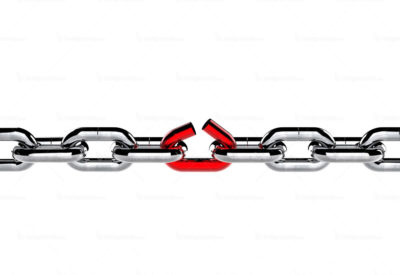
Yes that is a question mark, not a grammatical error. Return Driven Strategy rightly postulates that an ethical mindset needs to be in place on an ongoing basis before a company can target specific customer segments, map out a supply chain, distribute product, help a patient recover. The concept is fundamentally a pyramid structure which falls apart from the top down if ethics fail. Why? Well consider Enron, Tyco, Bear Stearns and the list goes on - all went bankrupt when morality and ethics within the organization/leadership failed.
In this same way many argue the customer is always right or always comes first. This implies that there is a hierarchy within the business. Yet the term value chain is often used colloquially by business owners, leaders, and MBAs alike. Is this not in fact a paradox? (Let us us know via Twitter)
Is the customer truly always right? Does he or she always come first in the value chain? What if the customer experience could be improved if the former was reconsidered, would you take us up on it?
Break down the components of your specific value chain (To make this example more realistic, imagine a 1-on-1 personalized healthcare startup.)
Customers/Patients
Staff/People
Suppliers
Agents
Venture
Investors
Marketplace (including competitors, and the region(s) in which you operate)
Looking at the above, how would you rank each in terms of importance? Take a pause now, do this for your business.
What would the investors have to say? Would they want to be 1st? Would they want to be 4th?
In reality this exercise is a fallacy. You cannot rank one above the other as each acts as a catalyst for the other in their respective ways. Unlike with RDS it’s not a Jenga tower. This is why it is more appropriate to think of each of elements in a circular manner with contiguous borders.
If your staff always thinks they come 2nd then how will they ever feel confident and valued enough to ensure the customers they service are always first? At some point this type of thinking breaks down. If you are the doctor and order your receptionist around and treat them with a lack of dignity, then how do you expect to provide empathetic personalized service to your patients? Would the receptionist feel obliged to remember a patients’ names or favorite preferred appointment time? Which matters more – the written ranking or the opportunity to impact customer experience? Bringing this full circle, reality has demonstrated that if an employee feels undervalued or disrespected the ability to act with ethics deteriorates whether this be work, honesty or otherwise.
The crux of what is being discussed here is culture. Culture -- good or bad leaks top/down, bottom/up, and left/right through your company. Weak culture is a virus that spreads, a strong culture which if managed through business change is one that builds resiliency and strength over time. Just like the business culture is not static, but evolves with it. The size of your organization is arguably irrelevant in this regard, except that with increasing size comes increasing volatility - or opportunity for facets (culture) to go awry. Culture is a catalyst and we can help yours thrive.
The next time you lose out on a bid, lose a customer, or have one walk out on you genuinely ask yourself what in your business' value chain failed? Was is truly just price (it sometimes is, and that is ok)? No matter how tempting, do not make the mistake and think in a binary manner - visualize your value chain in its components and sub-components to attack for a corrective and sustainable course.
Changing The Way Your Organization Thinks
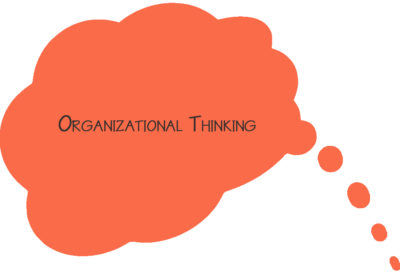
To say organizational leaders need to think about the future is indeed cliche. However the ability to think and make decisions becomes increasingly complex as time horizons become shorter and shorter as a function of both time and technology. Leaders can get caught in tunnel thought focused ontoday and tomorrow, forsaking problems (and opportunities) that can be averted with long term thinking. This HBR article clarifies the point, outlining the overall benefit to an organization that uses what it terms longtermism thinking.
Ari Wallach in a Ted talk asserts there are 3 ways to Think Like A Futurist. We found this idea especially applicable in a recent organizational change and strategic planning exercise where the chair could not bring himself to see around the corner and thus taking his lead nor could his team:
Transgenerational Thinking: As a leader your job beyond motivating and encouraging your team is to think about solving problems as they arise within the organization. You do this with the idea that the time you have to find an effective solution is between now and a determined deadline. This is a simplistic way of thought, having a problem meet a solution thus meet a short term need. Pushing further, leadership demands considering the consequences and opportunities of that solution after it is implemented and future impact.
Wallach gives the great example of giving a mobile phone to distract his kids at dinner time. While this might serve the purpose of having a quiet dinner, he questions the value and further afar consequences of how the kids might be affected in the future, perhaps antisocially interacting with others as a result of his shortermism.
Future Thinking: A fun exercise for anyone to suppose or imagine the world 10 to 15 years from now. We tend to think about a single path to the future but in fact until we get there there are multiple possible futures and Wallach encourages leaders to think through multiple possible solutions. So do this...look ahead and specifically think about what the world look like to you in the future?
One may see more technology and automation correlated to a utopian future where all problems are easily solved. This may be true but what are the other possibilities? Did we stop and consider them? What about a distopian future? The optimist inherent in many of us pushes positive thought first, but leaders are meant to consider all possibilities.
Teslos Thinking: Our favorite reminder from this article was the idea of Teslos Thinking. Teslos coming from the greek word for ultimate aim or purpose. Teslos Thinking pushes you as a leader to consider what is your ultimate aim or purpose? In other words it forces one to think to what end am I making a difference. This becomes especially useful in a change management exercise as it helps others around you visualize the end goal, making it more practical and achievable as they come on board to help.
You can follow Ari @AriW.
Rules vs. Values

The ability to do right or make the correct choice is a topic threaded throughout the current global zeitgeist. This leads @catalyzevalue to reflect on the roots of making effective decisions.
As a child grows up he or she is taught right from wrong. When the child gains the capability to form their own prerogatives they are bounded by rules bestowed from a parent. Very few children generally speaking agree and abide by their parents rules such as they relate for example to bedtime, curfews, or diet.
Rules imply a right and wrong and open up the opportunity for defiance.
What is missing from this conversation?
Quite simply it is the explanation of values. Adding in a discussion of values colors why rules exist in the first place. Initially this may seem like a justification, but when matters become more ambiguous, as the child matures, it is the values instilled versus rules remembered that build understanding and help make more accurate and effective decisions (as this same child matures).
A child may not understand why sweets are only allowed on Fridays each week. They may even sneak an unhealthy snack or two during the week in defiance of their parents rule. In contrast what if instead of just invoking a rule the parent extended the conversation to describe the value of living a healthy lifestyle which encompassed a healthy and balanced diet. The higher purpose of this is to go beyond the binary relationship of a rationale to a rebuff.
What then does this have to do with a operations management, organizational development, or even strategy implementation you might ask?
Hiring the right people and instilling values that align and exemplify the company as well as its mission become exceptionally important when managing a business. Values provide the rational and make the mission that much more tangible to employees. In ambiguous situations such as negotiations with customers or vendors, values give employees the ability to make decisions and create an internal corporate compass. These decisions directly impact costs, gross margin and net profit.
When an employee violates their company values ostensibly there is the feeling of guilt. Begging for forgiveness is not a virtue of an outstanding employee. Contrast this with the feeling of pride, of getting away, with breaking a rule. Pride often comes before the fall and in the end this equation is about engendering trust among the team horizontally, vertically and ultimately among customers. This is done with the right amount of friction in the form of values to mitigate any risk to the business in the form of to name but a few incremental costs, attrition, or poor strategic execution.
Gratuity - Good Service Not Included?
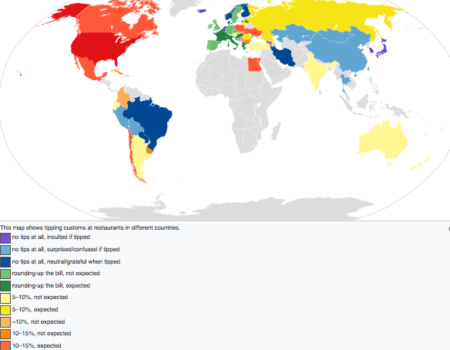
The discussion of whether to add gratuity was appropriate or not is a hot and perhaps sensitive topic, for especially those in the service industry. As a principle we believe service above par is integral to longevity no matter the scale or industry of your endeavors, or what the path to that end is.
As a noun service is defined as helping or doing work for someone or as assistance/advice given to customers before or after the sale of goods. Inherently certain minimum levels of service differ depending on the establishment. The food truck that sells burritos generally speaking is a grab and go with a low to medium expectation for gratuity. On the other hand, a sit down experience at any given restaurant in North America generally comes with the expectation of gratuity over and above the final bill. One could either accept this generalization or argue against the disparity.
Taking these North American gratuity standards to say Europe and one realizes how culturally diverse the practice of gratuity is. Wikipedia does a laudable job in summarizing the concept of gratuity in general and across countries and cultures. A notable contrast is how tipping in Japan is considered an insult.
This brings us closer to the dilemma highlighted in this post: Is gratuity implicitly included in the price for some services and not others? Is gratuity expected? Is gratuity earned? What level of gratuity is appropriate? Why is there such a discrepancy across industries?
For comparison consider sanitation or IT Service contracts which don't generally come with the expectation of gratuity - the service is arguably or implicitly priced in. Another example is the great conversation you might have with your UPS driver, or how he/she tucks your package under the doormat on a rainy day yet no gratuity is expected for this extra thoughtful gesture.
Conversely in the hospitality industry specifically, the rising cost of living globally provokes an emerging trend in rising gratuity levels from 10%-15% percent to 16%...18%...20% as automatic options upon rendering payment so that workers can share with other staff and yet still get the benefit of gratuity.
The customer then has to decide whether to tip on the whole bill or net the alcohol out as is the tradition in many cases.
The stress of this math takes away from the overall experience of what was otherwise a great meal.
A recent tweet by famed Canadian Journalist Ian Hanomansing on his Twitter feed July 9th put the conundrum into succinct perspective when he asked "A dilemma served with my coffee: what’s the appropriate tip for someone who took my order, handed me the credit card machine and poured the drink?.." The replies came pouring in.

Overall this begs the question of what's the price of good service? By pricing service, don't we make it a commodity? Should it not be part of the offering? Quality and service are what set you apart from competitors in any industry while customers appreciate simplicity and user experience.
From an accounting perspective it could be argued the owner in one way is deferring the cost of exceptional service to the customer. Yet on the whole in most western societies incentives go a long way (salary bonuses, graduating with honors, Starbucks points etc..).
Would it not be easier to charge equitable prices, pay equitable wages to all staff, and offer amazing service in return?
Advocates may say it just simplifies matters, opponents might suggest they want the option to add gratuity to the extent they felt it was warranted.
The answer is not ubiquitous but worthy of serious thought in a pricing and revenue model. From a marketing perspective being the black sheep can be a good thing and/or bad thing - having both positive as well as negative impacts on matters such as recruiting HR or customer perception.
Perhaps this post takes more of an enterprise perspective. Yet the secondary or tertiary impacts are equally important to consider in this discussion across any industry, reinforcing how complicated this simple math problem really is.
Highlights From Mary Meeker's Much Anticipated Internet Trends Report

Mary Meeker is known as the queen of the internet and each year published an Internet Trends Report each year.
After taking a 4 year break, Mary and Bond Capital are back with a version of the report that especially zones in on AI and Education.
It's also interesting to reflect and compare even if just for fun on her predictions from 2018 when we did a recap, very much pre pandemic, pre AI. Splunk does a great job of synthesizing the perspective of the each report over the years.
2018 Recap
- Internet adoption: As of 2018, half the world population, or about 3.6 billion people, will be on the internet. That’s thanks in large part to cheaper Android phones and Wifi becoming more available, though individual services will have a tougher time adding new users as the web hits saturation.
- Mobile usage: While smartphone shipments are flat and internet user growth is slowing, U.S. adults are spending more time online thanks to mobile, clocking 5.9 hours per day in 2017 versus 5.6 hours in 2016.
- Mobile ads: People are shifting their time to mobile faster than ad dollars are following, creating a $7 billion mobile ad opportunity, though platforms are increasingly responsible for providing safe content to host those ads.
- Crypto: Interest in cryptocurrency is exploding as Coinbase’s user count has nearly quadrupled since January 2017
- Voice: Voice technology is at an inflection point due to speech recognition hitting 95% accuracy and the sales explosion for Amazon Echo which went from over 10 million to over 30 million sold in total by the end of 2017.
- Daily usage – Revenue gains for services like Facebook are tightly coupled with daily user growth, showing how profitable it is to become a regular habit.
- Tech investment: We’re at an all-time high for public and private investment in technology, while the top six public R&D + capex spenders are all technology companies.
- Ecommerce vs Brick & Mortar: Ecommerce growth quickens as now 13% of all retail purchases happen online and parcel shipments are rising swiftly, signaling big opportunities for new shopping apps.
- Amazon: More people start product searches on Amazon than search engines now, but Jeff Bezos still relies on other surfaces like Facebook and YouTube to inspire people to want things.
- Subscription services: They’re seeing massive adoption, with Netflix up 25%, The New York Times up 43%, and Spotify up 48% year-over-year in 2017. A free tier accelerates conversion rates.
- Education: Employees seek retraining and education from YouTube and online courses to keep up with new job requirements and pay off skyrocketing student loan debt.
- Freelancing: Employees crave scheduling and work-from-home flexibility, and internet discovery of freelance work led it to grow 3X faster than total workforce growth. The on-demand workforce grew 23% in 2017 driven by Uber, Airbnb, Etsy, Upwork, and Doordash.
- Transportation: People are buying fewer cars, keeping them longer, and shifting transportation spend to rideshare, which saw rides double in 2017.
- Enterprise: Consumerization of the enterprise through better interfaces is spurring growth for companies like Dropbox and Slack.
- China: Alibaba is expanding beyond China with strong gross merchandise volume, though Amazon still rules in revenue.
- Privacy: China has a big opportunity as users there are much more willing to trade their personal data for product benefits than U.S. users, and China is claiming more spots on the top 20 internet company list while making big investments in AI.
- Immigration: It is critical to a strong economy, as 56% of top U.S. companies were founded by a first- or second-generation immigrant.
Source: Tech Crunch / Josh Constine
Lessons From Anthony Bourdain

Last week Anthony Bourdain passed away and the world collectively on social media or over business lunches mourned. You might already be asking yourself what to the world of cuisine and business have in common? Read on…
The reason for why touches on both our common humanity as well as a valuable lesson that can be applied to managing a business.
Arguably Mr. Bourdain’s gifts were in the kitchen, understanding culture, relating to others in a way few others could while drafting prose so that others could also understand his unique vision and experience - traits of a leader in any domain. Mr. Bourdain's wake clearly demonstrates how the amplitude of his impact was so much greater and will hopefully continue to be.
In the immediate hours after the news became apparent, several of Mr. Bourdain's quotes began circulating on social media. Two hit home:
1. "If I am an advocate for anything, it is to move. As far as you can, as much as you can. Walk in someone else's shoes, or at least eat their food."
2. Without experimentation a willingness to ask questions, and try new things, we shall surely become static, repetitive and moribund.
While very much open to interpretation in the context of other discussions on this site the first refers to empathy and agility. This would be great advice to a new employee in any organization. From a customer oriented perspective or when understanding a client’s problem, you truly 'need to eat their food'. To offer a solution without situating yourself within and/or along the problem stream is not a sufficient level of abstraction. Perhaps Mr. Bourdain was also implicitly referring to best practices from his wisdom. Solutions with the greatest longevity come from feeling the problem and understanding why it exists from the perspective of the person facing it. Lest we have to provide the definition for empathy more clearly.
Again arguably moving and doing so as fast as you can and as much as you can refers to continual learning and experience. In a world of disruptive change experience in different situations, new knowledge that helps you adapt within the next context are all almost mandatory strategies for success. In a recent MIT Management Review article titled Coming of Age Digitally 90% of respondents indicated they need to update their skills however only 34% were satisfied with the way their organization supports on going skill development. There is something to be said for formal learning, but creating an environment for continual learning on the job is an extremely effective tactic.
Just like trying new cuisine or experiencing a new culture through travel, those organizations that are willing to experiment over and over are more readily able to respond to change and disruption. They have a head start on speaking a foreign language. This further speaks directly to organizational culture. Change and experimentation are two additional ideas that connect Mr. Bourdain's two above quotes and espoused 'successful' culture. If primed, both qualities lend themselves to creating organizational speed and flexibility which inevitably, with some empathy and will, create positive feedback loops.
Here's to an open mind, seeing learning opportunities and teaching moments where they might always be overtly visible or stated. Thank you A.B.
Are You a Compassionate Leader?

Compassion is one component of being emotionally intelligent, but a very important one at that. One interpretation is that compassion differs from empathy in that former goes beyond just feeling what the other is feeling (walk in their shoes) and generally speaking involves taking some sort of action.
Think of the above in terms of your colleagues, customers or your overall business -no matter the size. How does having one or both compassion and empathy impact your ability to see the future and formulate action? We have argued on this page time over that the impact can be exponentially positive.
The Harvard Business Review, today, in an article published by Rasmus Hougaard and Jacqueline Carter asked the question "Are You A Compassionate Leader"? We couldn't agree more with their conclusions including the fact that it is not a winner take all skill, but can be shared and learned.
Excerpt from article:
"Compassion has become increasingly recognized as a foundational aspect of leadership. One study from 2012 found that compassionate leaders appear stronger and have more-engaged followers. Other studies have found that organizations with more-compassionate leaders have better collaboration, lower turnover, and employees who are more trusting, more connected to each other, and more committed to the company. When we surveyed more than 1,000 leaders from 800 organizations, 91% of them said compassion is very important for their leadership and 80% said they would like to enhance their compassion but do not know how..."
Together Hougaard and Carter created a unique assessment you can take now to evaluate your level of compassion.
You can read the full article and take the assessment here.
Expansion Opportunity Analysis
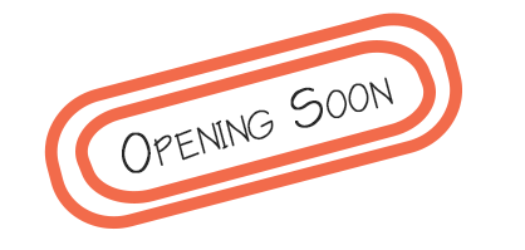
No matter how complicated every business dilemma at the macro can be separated into 3 parts: The Situation, The Complication, The Challenge at hand. This relatively rudimentary framework can be a starting point for breaking down otherwise complex problems. It may seem almost trivial to state, but ahead of entering the minutia of a challenge it is extremely important to understand what is happening and what the goals are. We recommend explaining the story in words as well as in numbers, with both being true to one another.
For example:
Take Redwood Coffee who is considering a regional expansion plan after 4 years of success within a limited geographic area. Having already examined its internal capabilities and finances, the question then of external factors becomes extremely important. (Internally we would want to be sure that capabilities, mission, and especially culture are conducive to a growth plan).
Situation: Redwood has identified 2 potential sites as part of the start of its regional expansion plan.
Complication: Management has identified the region as saturated with like thriving and flustering businesses with similar and inferior offerings.
Challenge: Understand switching costs, how does Redwoods offering make the switch attractive (overcome) versus the cost? What is the USP or unique selling point that Redwood has over incumbents? Value Proposition? What is the correct marketing strategy and spend? Mode of spend and relatability to market demographic?
To answer these questions Redwood, or any new venture, needs to understand:
- Internal Assets - Team (headcount and knowledge), culture, financial plan(ning), current KPI benchmarks, supplier support (from raw material to IT to payments).
- Barriers To Entry - Cliché, however what needs to be overcome before we can have relative certainty of success in the new market.
- Pricing - What is the pricing strategy currently, how does it compare to competitors in the expansion market? Is there an opportunity to gain or will it provoke slippage?
- Target Market - Who is the face of the customer within this new market? Is there an opportunity to grow relatively faster in this new market? Why? How?
This extensive collective analysis then can be curated into a plan that can be implemented and tell a more complete story. In this example, the key was to keep in mind that from a strategic standpoint there are 2 strategies that need to be successfully reviewed not only one. The first is the actual decision to expand and how that fits with the goals of the overall company, the second is the actual specific new market strategy. Executing on both lines lends a higher chance of success, as does explicit candor if the market opportunity fails to hold up on any one parameter.
The Japanese Concept of Ikigai
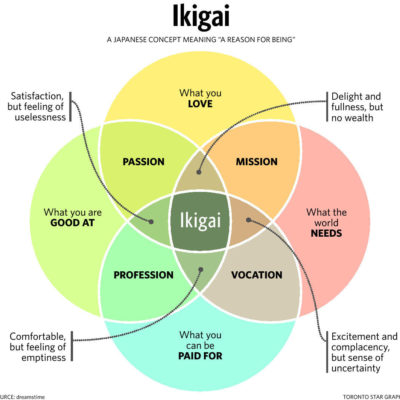
Building on an earlier post on mission and vision, there's a Japanese concept few in the West maybe familiar with - Ikigai. It refers to a reason for being. The Japanese have a talent for explaining intentions in one word whereas MBA's or marketers might use multiple in the form of a mission statement or value proposition. There is both an ethereal and tangible component to understanding something profound in one word. Those who took basic French would recognize this as raison d'etre.
Ikigai breaks up into different components.
- What are you good at?
- What do you love?
- What does the world need from you?
- What can you get paid for?
The above image which we take no credit for is a testament of how seeing something visually can help you better understand the profoundness and intersecting nature of Ikigai. The image enables the concept to be internalized. For example how love is both passion and mission.
On a more personal level the concept can refer to how wealth is attained, satisfaction, utility, uncertainty, fulfillment. Potentially all concepts your employees consider on a daily if not weekly basis.
For many in the West this might be seen as question and answer: A business has a reason to exist and the uniqueness of that reason enables a price to be charged. A Dentist cleans teeth but the service and capability with which she does this determines volume and therefore profit, added-value services notwithstanding. This example can go on for different small and medium sized businesses.
Capability in this sense can arguably be linked to tenure or love, and the four questions posed are almost binary. However another perspective brings into the conversation adaptability and change which we have spoken about before. Not how your skill and purpose might change, but what happens in the environment/world that makes knowing what you are good at a journey rather than a destination. Is the Dentist's goal own one practice or build several in a region and eventually be a mentor? Netflix started as a small mail order DVD service and has now morphed into one of the world's largest digital content creators - at a certain point in time mail order DVD worked but capabilities, love, need, profit centers arguably evolved.
While the Japanese did not likely have business management in mind when they invented the Ikigai concept as tellingly the questions are relatively personal; there is no reason that Ikigai can't be applied to your business, startup, or current project.
Dow Jones Plunges & Your (Business) Adaptability

For the second time in a week, on February 8th the Dow Jones plunged (the media's term, not ours) 1000 points.
Today, February 20th, Walmart reported earnings and suffered its largest stock price decline since 2015. Largely at the hands of Amazon who has been a juggernaut in the e-commerce space relative to Walmart's Jet.com.
The panic that seems to ensue in each of these cases is well documented, and has provoked us to think about adaptability or an adaptability quotient (AQ).
Adaptability is different from resiliency which would refer to how to weather the storm and get back to the pre-shock, homeostasis, state though both are valuable attributes.
Adaptation Syndrome is well documented from a psychological perspective including in Dr. Hans Seyle 1950's study on General Adaptation Syndrome .
The 3 stages of response are:
- Fight or Flight
- Restoring Homeostasis (the way things were)
- Recovery
Going back to the volatility in the Dow Jones with the benefit of hindsight, the media inevitably added to the hysteria and fight or flight response. Interviews and opinions were and continue to be abundant on both sides as to whether this was a sneeze, or an actual correction within the market. There was consensus that the market volatility would settle but the timing and the level of losses incurred were equally uncertain. Needless to say the FIGHT response would be to hold or buy into the dip and the FLIGHT of course would be to sell assets.
No one could put their finger on the timing of the market drop, the Dow is comprised of 30 companies which in general terms were not all equally suffering the consequences of a negative catalyst. This confusion, lack of planning, lack of knowledge perhaps affected people's ability to adapt. Many were focused on the one indicator rather than looking literally at the macroeconomic factors at play in terms of causation.
In the same way the overall market suffers shocks so do individual businesses. Many of these events or change catalysts can be adapted to with the right planning, or even seen coming. Complacency and delay have no place in carrying out successful operations and strategy. Foresight comes in the many forms both qualitative and quantitative specific to the business - the Value Drivers, as well as the wider economy.
The question becomes "if so…then…how". For example there is abundant innovation and research on Artificial Intelligence happening globally on an industry by industry basis. This will inevitably require a level of accommodation of both the technology and the business itself to continue to operate.
Thus once again, as a rudimentary example, the question is if AI will render customer service representatives in your business redundant (via a small investment), then how will you adapt? Do you need to take this potential savings and save it or re-invest it into other areas? If you can't afford the small investment, what are your competitors doing and where does that position you in relation to them? Most fundamentally how does this change affect your customers?
Small changes or opportunities bring into question revenues, COGS, HR, hurdle rates, credit ratings, loan obligations to name a few. This further relates your own level of emotional intelligence and awareness to anticipate the oncoming headwinds or change catalysts. While EI is generally a term that refers to people, we believe in this case it applies the business itself and its overall adaptability.
The question then becomes if change inevitable then how are you capable of adapting to it?
Monday Morning Quarterback (Superbowl Ad Edition)

In it's essential form, the purpose of marketing in a business is to create awareness, attention and increase turnover.
This morning's headlines were abundantly overrun with reports of the commercials that aired during the Super Bowl broadcast. It is reported that each ad cost upwards of $5 million. Some ads aim to be altruistic Budweiser Water and speak to the values, actual or espoused, of the company others were aimed at being simply humorous.
The day after, everyone wants to be the arm chair quarterback and offer their opinion on which company had "the best" ad. The interesting thing here is that the very idea of best is subjective with an audience so wide and vast. Thus a myriad of opinions are inevitably voiced.
The current overall heated political and social climate, many companies chose to steer away from controversial ads, some even went in the inspirational direction. Hearing Dr. Martin Luther King's words on any day can be an opportunity to learn and reflect. Yet juxtaposing them against an advertisement for pickup trucks as Dodge did, rubbed some viewers the wrong way. Twitter certainly helped voice those opinions. YouTube in fact now has a dedicated platform called Ad Blitz enabling users to view and vote on commercials. You can see by US state which ads are popular.
In the end however whether good, bad, or indifferent these companies are counting on viewers/potential customers to talk about these ads well after the Super Bowl. That is certainly factored into the ROI for each ad.
The consumer does look for consensus in knowing their favorite add was everybody else's, and there is something to be said for completely missing the mark, which inevitably happens. However, once again the purpose of these ads is to enable a company to be noticed and have "eyes on" its brand and offering.
So, with that said --and in the spirit of the game-- here are our 3 favorite ads of Super Bowl 52.
- E trade - This is Getting Old
- Sprint - Evelyn
- Tide - It's a Tide Ad
Netflix, Diapers, Total & Serviceable Markets.
Netflix reported earnings this week adding 8.3 million additional subscribers in the latest quarter beating estimates. This got us thinking about TAM or total addressable market and SOM or serviceable obtainable market.
The terms are near and dear to any entrepreneur or business referring to how many people or what potential revenue opportunity can result from using their product or service. While Netflix has domestic roots in the US its TAM continues to expand and benefit due to seemingly low barriers to entry (BTE) in reaching international markets, content curation within these markets, and heavy investment in the platform. The current subscriber count (a percentage of its TAM) is reported to be around 110M, and is the single most important value driver that has enabled the company reach its $100M+ valuation today.
While this isn't a finance blog, the question remains how many more subscribers are there left for Netflix to capture? Said another way is the $100 million valuation that media outlets are raving about warranted?
Most economists would agree that in the current global bull market, there is a level of disposable income around the world that is driving subscriptions to 'over-the-top' companies. Then there is the cord cutting trend that is well publicized and also a driver of the overall current subscriber count. So what then? What is the TAM of Netflix and how far can the valuation reach?
To answer this we must also be weary of competition as the TAM for Netflix is the same for upstarts such as Amazon, Hulu, Apple and soon Disney. The world population today is 7.6B and growing if not gradually, some analysts assert the TAM for Netflix, and for that matter online video subscription based platforms is around 500M or 6% of the current population.
Conclusion? While Netflix does benefit from first mover advantage and great content (product), it cannot be complacent in the current highly competitive or almost commoditized marketplace. The runway may be long but it is definitely steep at this point in the game. Increasingly its competition is forcing it to go beyond TAM and consider serviceable and obtainable market (SOM). Growth at any cost will not be sustainable.
Why do demographics matter when considering TAM? Consider on the reverse side, Kimberley Clark, maker of Huggies Diapers, on the same day at Netflix's earnings reporting a cutting of 5,000 jobs and 10 factories directly citing a shrinking TAM that not even lower taxes can impact. What is the cause? Kimberley-Clark's TAM is directly correlated to the birth rate, which over the same time Netflix has become a company, shrank by approximately 13%.

US Birthrate 2000-2015 (12.4/1000)
The above is indeed at a $MM scale. However the same considerations apply for any business whether you are a doctor opening a new practice, a coffee bar opening a new café, or a niche online home business. One of the first things you must research is the TAM and its future prospects of growth or decline. This should include but not be limited to demographics, economic data, incomes and the like. This research will tell you how viable your proposition is or perhaps if it is better situated elsewhere.
Lastly, growth comes at a cost. For Netflix specifically it occurs at the cost of taking on debt, resulting in being given a B+ rating (highly leveraged) by S&P. How does a similar circumstance effect your own future growth? Interest rates are currently low on a relative basis, but the same economic growth we referred to above is also inevitable going to drive rates up.
Once you have your TAM one of the next considerations are how to actually reach it and be operationally and financially viable to respond to all the value drivers of the business: There-in lies the beauty of innovation and entrepreneurship!
Mission, Vision Statements & Your Success.
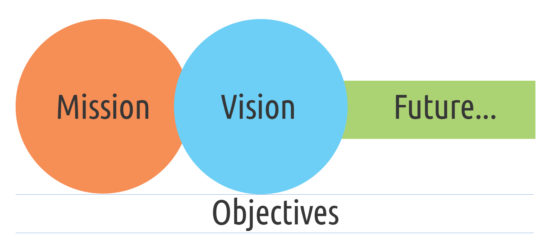
As we move into 2018 and try to think beyond the cold weather to objectives for the year it is worthwhile to revisit the difference between a mission and a vision. The 2 are commonly interchanged incorrectly or misused.
Collectively both help to define culture, values, and external perception. Vendors and customer often use each to understand their counterparty. Employees use both to navigate change, make decisions, or determine performance levels required
A mission statement speaks to the activity of the organization, what it does, and how it does it.
An organization's vision statements define what it would like to be in the future. There is a deliberate sense of concision and precision in each message such that it can be understood, carried out, and tested.
A mission and vision statement are underpinned by objectives that make them live and breathe. Each can be equally translated to you at an individual level personally, or even to your role within a professional functional team. Notably, there can be different levels of abstraction to reach successful outcomes.
Lastly there is the opportunity for a mission and a vision to be fluid. In fact while seemingly concrete for the largest of organization, there are many examples of where market forces, economy, new capabilities, or technology to name a few coerced a change in mission/vision.
Facebook's mission was "Making the world more open and connected". However in the middle of 2017 Facebook changed its mission to "“Give people the power to build community and bring the world closer together". A subtle change that CEO Mark Zuckerberg said he had a responsibility to do as the former did not push for a specific positive connection from increased connections. Hindsight shows the change was also the result of strong external pressure amid months of negative news coverage on the company.
The change was largely seen as a positive step and a recognition of Facebook evaluating itself. Though Facebook is a billion dollar company this is something that you can do alone as you think about your own 2018 objectives and future success.
Who were you in 2017? Who are you today? Who do you want to be in the future, say January 1st, 2019? What are your values? How do you want to be perceived? Use this as a starting block to create a mission and vision for yourself along with a pathway in the form of objectives to create an even stronger tie between the two.
Treat yourself to a nice notebook if you don't already have one and ask yourself the above questions. Use the notebook to revisit the objectives you set out and that form the foundation of your success periodically through the year. Hold yourself accountable and feel free to revise keeping in mind your level of abstraction and time. Let us know your progress or feedback via twitter @catalyzevalue
What Do Amazon, Food, and Back Pain Have In Common?
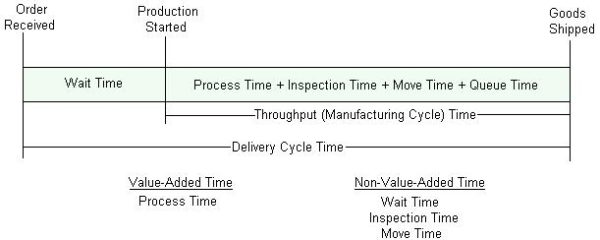
Every process improvement conversation used words like faster and better .
When taking on such a project one needs to consider if faster is in fact better. In a world ruled by Amazon or 2-day shipping, customers become conditioned to almost on demand delivery or getting something they want when they want it in all aspects of their lives. Going slow doesn't seem like a viable option. It's often a race to the check-out.
For instance, what's the difference between fast food and dine-in? Well the cycle time and throughput are inevitably different, but what about quality? If you asked customers who visited the respective dining outlets on a given evening about quality, they both might say they each had a great experience even though one took 5 minutes and the other 120 minutes.
Why?
Because of specification. Each experience met its own designed specification. For a dine-in experience, faster would not be better: The customer would very well feel unappreciated, rushed out the door, and perhaps not even return. The fast-food equivalent of this would be sitting in the drive-thru lane for 10 minutes to receive and pay for your order.
This analogy or pseudo paradox works for chiropractic patients who desire positive experiences and quality of care. While the doctor earnestly shares these values, they also are interested in increasing billings. With the array of 'customers' they interact with not always being smooth and even, are these values mutually exclusive? A certain challenge on both sides, yet there are several pathways. One is to process map both experiences, identify value add and waste steps along the way. When we asked doctors to have someone sit for an hour or two in the waiting area a few times over a week-long period to observe activity on a notepad most thought this would be a waste of time. However this work not only contributed to designing a more ideal process but enabled the person to get virtually free direct uninhibited patient feedback.
While continuous improvement may be the name of the game, never ignore what competitive advantage as well as benefits are given from actually being slow, rather known for quality and thoroughness. Remember quality is relative. For a chiropractor, is 4 x 15 minute appointments/hour more ideal than 3 x 20 minute/hour? Ideal for who - would a patient pay more for 5 extra minutes with the doctor? Conversely is a doctor willing to identify wasted time throughout the practice, 2-3 minutes an hour perhaps, to fit in 1-2 more billable patients/customer per day (is this what a chiropractic Prime membership could look like)? The math on this per week or per year makes the answer seem almost rhetorical.
Quality whether defined by level of care, speed, experience, flavor, creativity, or likely to recommend (NPS) are several ways to weed out the doctors or restaurants that are able to create and deliver customer value from those that simply do not, the discussion on Value Drivers notwithstanding.
Where Are Your Customers
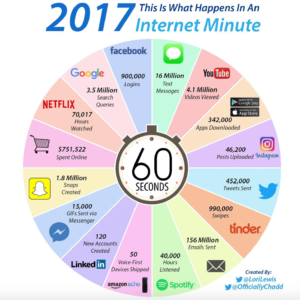
The manner in which we consume and exchange information in 2017 is far from the way they it was 5 years ago. This pales incrementally to 2023 with the advent of AI or conversely to 2007 (when the first iPhone was released). This idea extends just as well to customers.
The above graphic "What Happens In An Internet Minute" was compiled by @LoriLewis and @OfficiallyChad of Cumulus Media and makes the above point quite clear. Beyond just the sheer numbers there is noticeable trend towards video and networked platform based communication. This does not include the potential growth or ways the platforms themselves may be augment with the advent of AI. Many of these platforms derive their value from network effects
Given this ever growing and evolving landscape to be also true in the business world, the question must be asked how are you reaching your customers?
The answer is that there is no answer, or a silver bullet anyway, your enterprise has its own unique customer demographics and needs that are best met by a specific modalities of engagement. An important consideration is the number of avenues you attempt to communicate or engage with customers. Can you really manage and be proactive on all or most networks visualized above all by yourself? Is this activity of value to your customers? What is the better platform to advertise on? Do you need to outsource this? A better question is perhaps does the pareto rule apply - does 80% of your opportunity to engage with customers come from 20% of the available platforms? An even more superior question is how does this lead to increased profitability or at the very least turnover?
Keep in mind attention spans are growing shorter and shorter, customers take on average 6 seconds or less to make a decision on value. For many millennials that is an eternity.
Even if internally, this is worth a discussion. As these platforms evolve to become more or less relevant to your customers (and the economy) so should you so as not to face attrition. Lastly, in terms of your business and growth, keep in mind both relevance and resilience are dynamic concepts.
The above graphic was featured on The Visual Capitalist, a fantastic website to keep an eye on especially for the continuous learner.
Thinking Outside The Box: Partnering With Your Competition
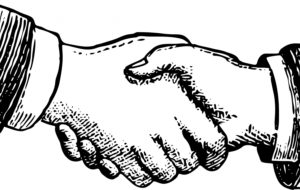
Last week we discussed how much value you give to your customers and how well you can maintain a profit based on the quality of service you provide, 2 tenants of Catalyze Value. A more practical discussion is how to actually execute on this or do it in ways that differentiate you from the rest.
A strategy we offer for consideration is partnering with your competition. This may not seem very intuitive at first and surely not without its risks, but can deliver exponential value to your business especially if it makes your customers happy.
Take a recently partnership announced between Audi, BMW, Daimler, and the Volkswagen family of brands who launched Ionity in November 2017. The joint venture aims to build a network of fast charging station for electric vehicles across Europe. Each car manufacturer maintains its own key selling features that will still attract respective customers. Ionity further enables a stronger collective value proposition for the customers of its collective membership to purchase an e-vehicle and make the experience of ownership more enjoyable or with less range anxiety.
A second reason to join forces is to consider what resources you don't currently have that might be gained from a competitive partnership. Qualitatively and quantitatively work out if the initiative will raise the barriers higher preventing other less favorable competitors from hurting you in the future. While such a strategy could be short term and/or long term, it is one that is considered with eyes wide open.
One such instance was a food processor we at CV worked with that in its start-up phase that benefitted from sharing raw material processing and packaging lines with like competitors. This enabled both to keep costs reasonable while and refrain from worrying about leasing a facility their scale couldn't sustain not to mention equipment sanitation, repair and maintenance. We provided guidance at through this intermediate stage that enabled our client to focus on growing distribution partnership and at the right time effect a mutual dissolution of the partnership.
The example of Ionity is useful because it also demonstrates an opportunity for the join venture as well as each car manufacturer to get on the social media mega-phone to share the news of the partnership thereby elevate their individual brand and as an e-vehicle retailer. Further you can use the venture to engage with customers and understand how to improve the partnership - once again creating an opportunity to increase value to the customer as the project advances. The truth is that working with the 'the other side' is not a novel strategy, it is just often bounded by fear or the lack of support to execute.
The 5 Laws Of Stratospheric Success

Happy Halloween! As we move into a new month we are thinking about how to start move towards the end of the year with momentum. At a recent conference, we were introduced to Bob Burgh and John David Man's book The Go-Giver. What stuck out the most was the Five Laws of Stratospheric Success, a simple yet effective framework applied to your company.
- Law of Value - Your worth is determined by how much you give in value rather than what you take in payment. We would add that while profit for a business is the difference between revenue and costs, while profit for the customer is feeling like they received more than expected or what they paid for - think of your favourite restaurant or luxury hotel chains.
- Law of Compensation - Income is price x quantity minus costs. While costs are constant (in the way a certain base always exists) your ability to maintain or increase the price and incoming volume is determined by the quality of your service. Nordstrom is a great example of a business, however in a struggling retail environment, that does not relent on service and thus is able to charge a premium for this experience. Moreover it is this experience that then acts as a competitive advantage versus Zappos or other online or brick and mortar competitors.
- Law of Influence (echo of impact) - Your ability to influence is determined by how you well you are able to put the interests of others first. Good service echoes, word of mouth is one of the strongest forms of marketing. This is what makes businesses like Yelp so powerful, businesses across industries that deliver value and service are rated higher than those that don't. Again this an example of influence not necessarily profitability.
- Law of Authenticity - The most valuable gift you have to give is yourself, no more explanation needed. Put another way, being credible and trustworthy gives enables you to serve others, relate to them, and have a genuine impact.
- Law of Receptivity - The key to effective giving (law 2 and 3) is staying open to also receiving. If you are giving all the time then you are not allowing others to do the same. It's not a winner take all game all of the time, success is multi variable function.
For more information on these laws or the book go to http://thegogiver.com.
Mentorship & Competitiveness:

- Schedule at least a 30 minute session to discuss a baseline SWOT analysis.
- Not being a formal review, this is also an opportunity to make the discussion 360 degrees rather than vertical, the learning opportunity should be mutual. In some cases it's important to know going into the meeting that diplomacy may be a key success factor
- Identify core activities and how well they relate to the goal of the position as well as the maintaining the competitive advantage of the company. Perhaps some activities are better replaced or delegated?
- Identify knowledge or skill gaps as they relate to the future of the business (Negotiation, Conflict Management, Use of Technology, Networking Skills to name a few).
- Identify ways to turn gaps into opportunities through further dialogue, training, in-field days, or perhaps direct customer engagement.
- Lastly, document the meeting: key topics discussed, deliverables for next meeting such as further research on a topic, date of next meeting.
- Send e-invite for next meeting.